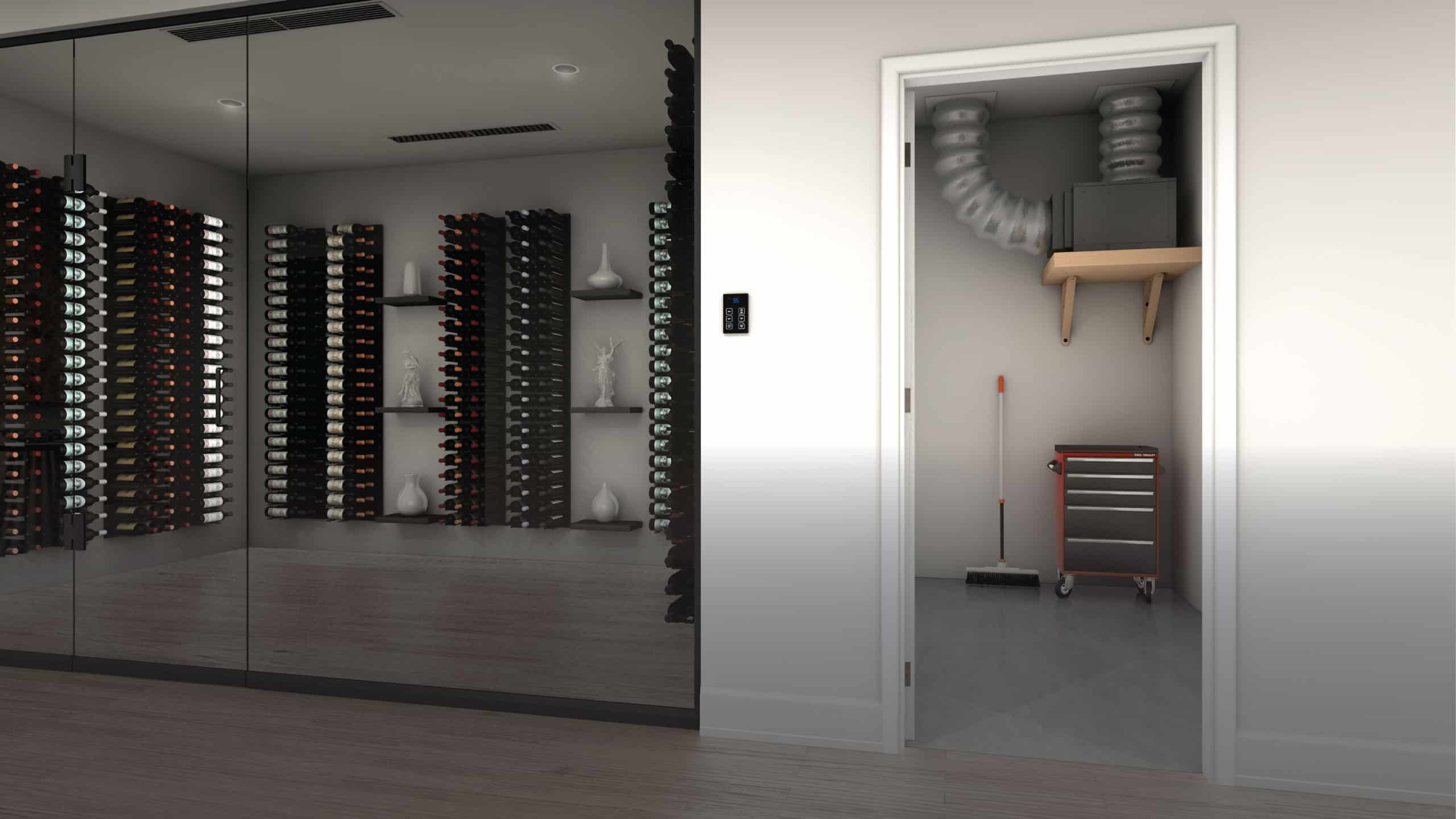
Glass Wine Cellar Challenges
Many wine cellar owners and contractors know how beautiful a modern wine cellar can be. (For the purposes of this article, we’re defining a “modern wine cellar” as one that incorporates non-traditional racking made of metal or materials other than wood. More importantly, it also includes glass. Glass walls, glass doors, etc.)
But some people are unaware of the thermodynamic properties of glass. Especially compared to traditional construction materials like drywall, wooden studs, insulation, and a proper vapor barrier.
Glass vs. Traditional Cellar Construction
Traditionally, wine cellars were below-ground, built into hillsides or beneath structures. For much of the modern era, home wine cellars were ordinary rooms in people’s houses. These rooms have extra insulation and vapor barriers. The door is made of solid wood and includes weatherstripping (including a bottom “sweep”). The walls are made of drywall or plaster and contain heavy-duty insulation to keep the temperature in the cellar as constant as possible. The vapor barrier prevents water vapor from entering or leaving the cellar. This keeps the wine corks moist and prevents them from cracking.
The current trend in interior design (and, consequently, wine cellar construction) is “modern industrial.” The modern industrial design trend, according to Wikipedia, is “an aesthetic trend in interior design that takes clues from old factories and industrial spaces that in recent years have been converted to lofts and other living spaces.” Metal (such as brushed aluminum) figures prominently in modern industrial design. And so does glass.
The current trend in wine cellar construction is to place the wine cellar in a central area of the home, usually in the living or dining area. It’s becoming more and more popular to furnish the wine cellar with glass doors and walls. Many modern wine cellars, for example, have three glass walls and one normal wall. Metal rails and pegs secure the wine bottles to the conventional wall. The glass allows passers-by to view the wine from virtually any angle.
The Problem with a Glass Wine Cellar
Unfortunately, glass is not an ideal construction material for wine cellars. First of all, it conducts heat far better than insulated drywall. When you build a wine cellar, what you must remember is that you’re not just building another air-conditioned room. You’re building a walk-in refrigerator. A glass cellar will require a much more powerful cooling unit to keep the space cool.
Second, glass wine cellars frequently do not include weather stripping on the door. As a result, heat and moisture leak into the cellar at a far greater rate than it ordinarily would in a traditional cellar with weather stripping on the door.
Our Recommendation
CellarCool recommends traditional drywall construction with 2×4 or 2×6 studs. Insulation should be a minimum of R-17 for interior walls and R-30 for ceilings and exterior walls. The cellar must have an adequate vapor barrier to prevent water vapor migration in and out of the cellar, and the door must have weather stripping, including a bottom sweep.
If glass must be used in the wine cellar’s construction, we strongly recommend caution. The glass should be dual-paned insulated glass. The door, even if made of glass, should still have weather stripping, including the bottom sweep. This will help prevent heat from entering the cellar and help keep moisture levels within the cellar relatively constant. Cellar owners and contractors should take care to compensate for the poor insulating properties of glass by judiciously upsizing the cooling unit they select.!





No Comments